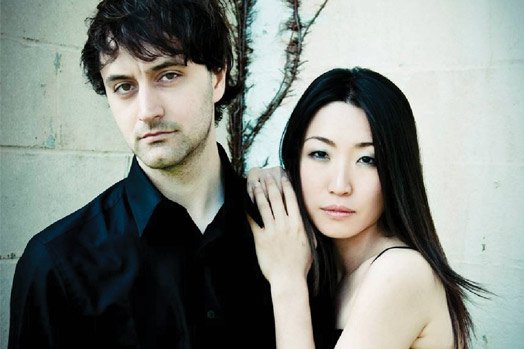by Delaney Meyers

The CIPC laureates opened their program with Mozart’s welcoming Sonata in B-flat for Four-Hands. Mozart’s music sprung off the keys, its buoyancy reflected in Lee’s facial expressions as she gracefully laid a foundation for Dank to dance on. Their connection as partners, both in music and in life, was immediately evident, and their synchronized release of the first movement’s last note felt as if a bed of cottonwood seeds had been lofted upward from the keys.
The Adagio showcased the Duo’s attention to detail, and the Molto Presto their wide range of dynamic contrast. Dank’s and Lee’s playing was ever elegant, even throughout that fast and energetic movement. It was as if a single four-handed person was playing.
Lee’s artistry stood out in Scriabin’s Prelude in f-sharp and Janáček’s Piano Sonata 1.X.1905, “From the Street.” She gave the Scriabin a gorgeous performance, but it was the Janáček that really left an emotional mark. It appeared that she was simultaneously feeling the drama and the pained beauty of the piece, and was equally committed to both. She created long, emotive phrases against Janáček’s fragmented and complex writing — the kind of performance that made you forget the notes were ever confined to paper.
Dank’s solo selections occupied the brighter end of the spectrum both in sound and emotional content. While Liszt’s Sposalizio and Polonaise No. 2 in E were well-played, they paled against Lee’s intense Janáček. Still, Dank’s technique and flexible timing were impressive, and Liszt’s music provided a nice moment of repose before the Duo launched into Stravinsky’s The Rite of Spring.
As Dank said from the stage, the four-hands version is a “different journey” and in many ways a completely different piece from its fully orchestrated sibling. The timing could not have been more perfect — dusk was descending outside of Mixon Hall’s glass stage wall, and birds were flying away as if attempting to escape the imminent chaos.
Lee’s opening call was mesmerizing and haunting, and the addition of harmonies from Dank gave the sound an impressionistic quality that is not as present in the orchestral version. As the sky darkened, The Rite continued as if something very heavy were rolling purposefully along to meet a serious fate.
The Duo’s deep connection was even more salient in this performance, often making it impossible to tell who was playing what. This uncertainty was furthered by the wild hand crossings involved in Stravinsky’s four-hands version. Lee and Dank were totally committed to the gruesomeness of the music, and Dank’s constant awareness of his musical partner was special to witness.
After a brief moment of peace, Dank gave a sharp sniff, beginning the charge to the end with relentless, low bangs. As Lee joined in on the electromagnetic pulses of chords, the piano seemed, finally, to fully embrace its role as a percussion instrument.
Published on ClevelandClassical.com June 11, 2018.
Click here for a printable copy of this article



